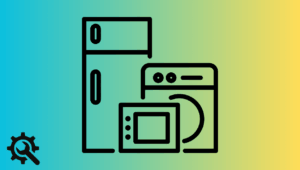The modern business environment never really pauses. One moment a trend is barely noticeable, and the next it is pushing entire industries to adjust. Right now, one of the most important shifts is happening at the exact moment when people decide what to buy. It may look like a small detail, but when millions of shoppers start making sharper, better informed choices, the impact spreads from marketing strategies to logistics and long-term planning. In this article, we’ll explore how smart tech is reshaping consumer choices in today’s fast-moving market.
For a long time, buying decisions were guided mainly by massive advertising campaigns and a few casual recommendations from friends or colleagues. That formula no longer works on its own. Today’s customers are buried under options. So, endless smartphone lines, laptops that differ only in tiny technical details, and cameras that seem to require advanced tech knowledge just to compare. Because of this overload, AI-powered recommendation tools are steadily taking over the decision-making process, one product search at a time.
A good example is TopTechChoices. It acts like a smart tech-matching assistant, narrowing down choices based on what people actually need: gaming performance, strong cameras, beginner-friendly setups, productivity machines, or something in between. Instead of wandering through chaotic product listings and conflicting opinions, users receive a refined selection shaped by their budget and expectations. It feels similar to asking advice from a genuinely tech-savvy friend who knows the market and doesn’t sugarcoat things.
How AI-driven guidance changes the buying journey
This approach turns the traditional shopping model upside down. Instead of buyers hunting for products, products now fight for a place on the AI’s recommendation list. As these tools become more common across online stores and comparison platforms, brands are forced to rethink how they present themselves to algorithms that ignore flashy slogans and focus only on clear data and real performance.
Retailers are already reacting. Many are cleaning up and structuring product information so algorithms can read and evaluate it accurately. Others are focusing more on honest specifications and user-centered performance rather than pure marketing flair. Shoppers are better informed than ever, and their tolerance for exaggerated promises is fading quickly.
Why modern consumers outpace brand communication: Smart tech choices
AI-driven tools do more than simplify the search process; they quietly push buyers toward healthier purchasing habits. People move away from overpriced devices and gravitate toward realistic, practical options. They often trust algorithmic suggestions more than ads because the recommendations reflect real-world needs instead of brand ego.
- Clarity matters: Straightforward comparisons and honest specifications are more persuasive than vague buzzwords.
- Personalization rules: Tools adjust to whether the user is a gamer, content creator, student, or complete beginner.
- Better value: Shoppers avoid paying for features they will never notice or use.
- Noise reduction: Irrelevant or weak options disappear before they can confuse the buyer.
How brands can stay visible in an AI-shaped marketplace
The reality is tough: companies that fail to adapt risk being filtered out long before a potential customer even sees their products. Algorithms do not forgive unclear descriptions or inflated claims. If a product’s data is messy or incomplete, the system simply skips it. Not because it is bad, but because it cannot be evaluated logically.
To remain competitive, businesses have to improve the way they structure product details and how they express genuine value. AI systems reward transparency, precision, and usability. The same qualities that modern consumers increasingly expect.
Key signals shaping tomorrow’s market: How Smart Tech Is Reshaping Consumer Choices
Anyone who wants to stay relevant in this changing consumer landscape should watch a few important trends:
- Structured data adoption: Clean, machine-readable product specs get better visibility in AI-driven recommendation engines.
- Demand for utility: Buyers are choosing function and reliability over theatrical branding.
- Rise of micro-segments: Narrow audiences. So, like travel vloggers, casual gamers, and student editors. Moreover, now influences how products are designed and marketed.
In a world overloaded with options, the real winners will be companies that treat AI as a collaborator rather than a rival. Recommendation engines are quickly turning into the new digital storefronts, and brands that align themselves with this shift are the ones most likely to survive and grow.








